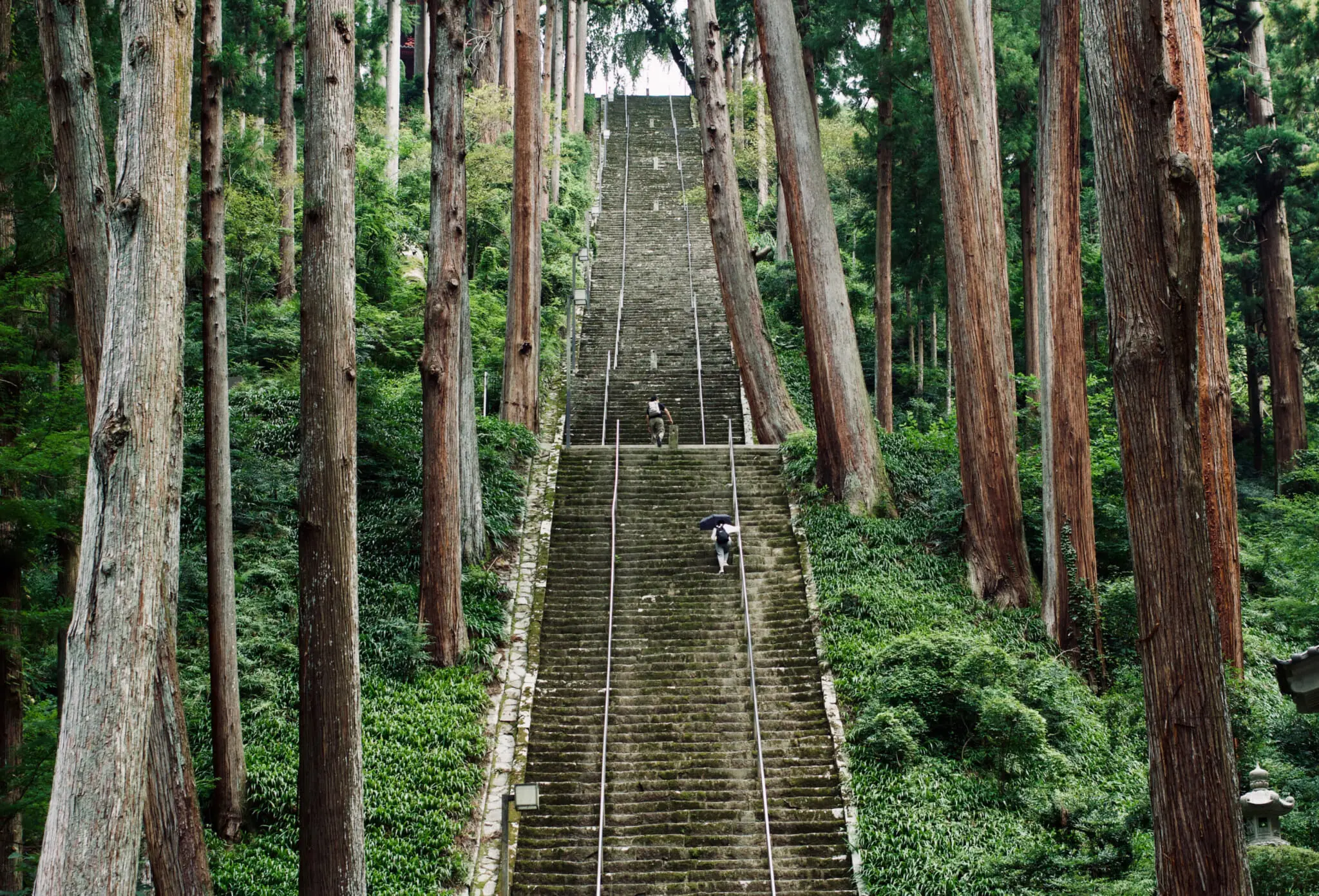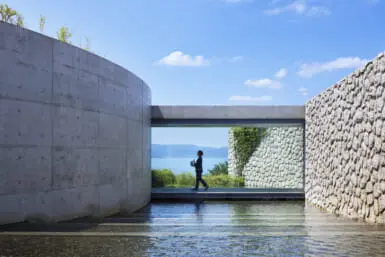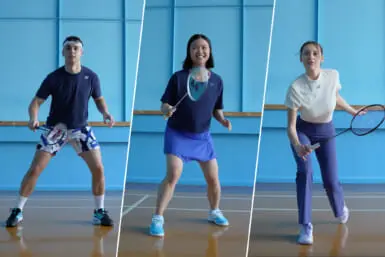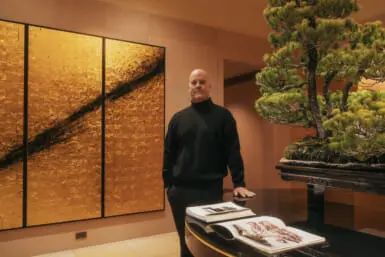For over seven centuries, Buddhist pilgrims have traveled great distances to pray at Minobusan in Yamanashi Prefecture. Minobusan is considered one of Japan’s most sacred mountains, as it’s home to the extraordinary Kuonji compound: the head temple of the Nichiren sect of Japanese Buddhism.
Kakurinbo is not only a place of spiritual significance, set on sacred land that effuses mystical beauty; it also offers invaluable cultural and natural wonders to the general public. The town in which it’s situated, Minobu, recently won the Hometown Development Award from Japan’s Ministry of Internal Affairs and Communications for its multifaceted charm.
Read on to learn more about the area’s accommodations, activities and cuisine.
Where To Stay in Minobusan
Traditional Temple Stay at Kakurinbo
For those looking for full immersion in Minobusan’s spirituality, Kakurinbo makes for an unforgettable stay. It’s a shukubo, or temple guesthouse, initially meant to accommodate visiting priests and novice monks. As time passed, it gradually began to accommodate regular guests as well.
Even among shukubo, Kakurinbo is particularly prestigious — it’s part of Gyogakuin Kakurinbo, a satellite temple of Kuonji. The satellite temple was founded around 550 years ago by Nitcho Daishonin, a disciple of Nichiren who is now revered as a deity of eyesight and learning. In each room at Kakurinbo, you’ll find a complementary gift of blessed eye drops made from the waters of Minobusan in honor of his legacy.
At Kakurinbo, visitors have the unique opportunity to experience the tranquil and spiritual atmosphere of a temple environment. The guest rooms are traditional Japanese style — spacious and elegant, maintaining the building’s original design and structure. Some look onto a beautiful Japanese garden created by the famed Zen master and landscape gardener Muso Kokushi. The garden is also visible from one of the facility’s bathing rooms, which feature relaxing wine bath salts inspired by Yamanashi Prefecture’s specialty wine.
Ebisuya Guesthouse: Traditional Charm and Modern Comforts
An alternative option for accommodation is Ebisuya, a 90-year-old guesthouse not far from Kakurinbo. Originally built in 1933 for the family of a wealthy local merchant, the house remained empty for decades before its renovation in 2021. Now, it can be rented in its entirety for a tranquil and refined stay.
Much of its original structure and decor has been meticulously preserved, with added furniture and objects representing the finest Yamanashi craftsmanship. In addition to a myriad of storied, ornate design elements — such as extremely rare Taisho-era glass pane doors, cloud-shaped lighting fixtures and a stunning cinnabar-glazed vase on display by the entrance — the space discreetly integrates modern amenities.
Rooms either face a traditional Japanese garden that is cast in an ethereal glow at night, or include a secluded furnished terrace looking out over a mountain stream and lush greenery. Guests can enjoy a variety of dining options, like eating al fresco at the adjoining Cafe Zencho, heading to Kakurinbo for traditional vegetarian cuisine or ordering in. A fully equipped kitchen is available as well, for those who want a quick meal or an intimate dinner.
What To Do at Kakurinbo
Cultural Immersion: Buddhist Practices and Beyond
While staying at Kakurinbo, you can participate in a variety of spiritual and cultural practices. One such tradition is shodaigyo, a Buddhist chanting practice. Chanting the odaimoku (the sacred title of the Lotus Sutra) is unique to the Nichiren sect, and is a form of meditation that is said to calm the mind and body.
Staying at Kakurinbo also allows you to tour Kuonji at night. If you rise before sunrise, you can also witness the morning prayer service; it’s a sublime and moving experience, with dozens of monks chanting.
Kakurinbo offers other cultural activities as well. For instance, you can try on traditional kimonos with the help of staff, try your hand at kintsugi — the Japanese art of repairing broken pottery with gold lacquer — and take part in calligraphy lessons. Depending on the time of year, guests can expect to view special ceremonies at Kuonji, such as the New Year’s Prayer Service or the Autumn Equinox Segaki Ceremony.

Buddhist Vegetarian Cuisine Featuring Yuba, a Local Specialty
Traditional Buddhist vegetarian cuisine, featuring various yuba dishes, is central to the temple stay experience. Kakurinbo takes pride in their award-winning interpretations of fresh yuba — a delicacy made from soft tofu sheets — and fresh seasonal ingredients.
Some examples of freshly made dishes you can expect are steamed yuba with a cherry blossom flavor, a yuba and soy milk tomato hot pot and homemade natto fermented daily using local Akebono soybeans. With Yamanashi Prefecture being one of Japan’s leading producers of wine, Kakurinbo has no shortage of local wines that pair perfectly with yuba, tempura and simmered dishes.

Tour Minobusan
Kakurinbo also offers guided tours (available in Japanese and English) of Minobusan’s key Buddhist sites, including a pilgrimage up Kuonji’s many steps.
To explore the mountain’s cedar forest paths at a leisurely pace, you can also rent e-bikes, making your way around the Kuonji temple compound in its entirety. If you’re feeling adventurous, you can hike Mount Minobu and see graves along the way. At the summit, you may be able to spot Mount Fuji in the distance.
For more information on the accommodations and services mentioned, head to kakurinbo.jp or minobunavi.jp. You can also check @kakurinbo_temple on Instagram for updates.
Kakurinbo Location and Contact Information
Gyogakuin Kakurinbo
3510 Minobu, Minobu-cho, Minamikoma-gun, Yamanashi Prefecture
Tel: 05 5662 0014
















